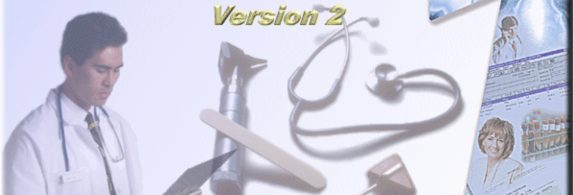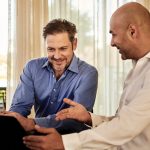Looking back on 30 years of MedicalDirector
As MedicalDirector celebrates its thirtieth birthday this month, we spoke to staff who have been with them on the journey for many of those years.
It was 1992. That same year the Barcelona Olympics were held, Bill Clinton was elected the 42nd President of the United States and Baz Luhrmann’s Strictly Ballroom wooed audiences.
Manager Clinical Content, Allison Hart, joined the business in 1995 when it was the federally owned Health Communication Network with a mission to source and web-enable content for clinicians.
As one of the fore founders, Allison recalls arriving hours before a hospital presentation was due to begin to ensure connectivity was working by the time the presentation was scheduled to start.
Dragging a projector, computer and bag of chords she and the team would take a long telephone cord and plug it into a fax machine to connect to a dial-up modem.
Her presentations began with detailed explanations of what a website is, where to type a URL and other computer basics.
It’s no surprise the company established a part of the business which trained medical professionals to use computers.
It was 1995 after all. The year Microsoft released Windows 95 and Apple released the Power Macintosh 8500 for US$4000 (adjusting for inflation that’s the equivalent of around AUD$13,000 today).
Paul Keating was Australia’s Prime Minister, Michael Jordan came out of retirement to re-join the Chicago Bulls and and Coolio’s Gangsta’s Paradise spent 14 weeks at the top of the singles chart. Google wasn’t even founded until 1998.
Allison recalls periods of doubt as the healthcare industry slowly adopted technology, but with vision, persistence and tenacity significant change was achieved.
Allison brokered deals to develop the first worldwide clinical portal to provide information in the cloud, moving to the UK and selling to the National Health Service (NHS) for a number of years as the company grew during the dot-com bubble.
“What we did was make a difference to doctors making decisions at the point of care, improving the quality of life and reducing deaths due to adverse drug events, which feels good to this day,” Allison said.
Development Manager Scott Schmidt was studying a Bachelor of Information Technology and applied for a software developer role at Bundaberg-based Medical Director – note the space – persistently during his final year.
He secured a role that was part customer service and part software development as the business wasn’t recruiting for full-time software developer roles at the time.
“It was 15 November 1999 when I joined a team of only about five customer service staff servicing all of Australia at the time,” Scott said.
Scott moved to a full-time software development role within a couple of years when the company had the vast majority of the market share, and a strong focus on listening to its customers and enabling government driven regulatory changes.
He finds it amusing that there was Medical Director 3 for DOS and now MedicalDirector Clinical 3 for Windows. He worked on both the Medical Director 2 and 3 products for Windows, now known as Clinical 3.
When software upgrades came on floppy discs, then CDs, in the mail, the tight knit team worked and socialised together – taking their computers to each other’s houses for gaming nights before online gaming was a thing.
As Health Communication Network grew through the acquisition of Medical Director, PracSoft, Bluechip, AusDI, and others the team retained these companies’ founders many of whom are still with the company today including IT Manager Chris Winkley and Head of MedicalDirector and Director UK/Australia Partnerships Matt Bardsley.
Medical Director re-branded to MedicalDirector – no space – and sold to private equity company Affinity Equity Partners in 2016 where investment in MedicalDirector’s cloud solution, Helix, grew exponentially.
“Everyone is really excited to be part of the Telstra Health group now and can only see things going up and expanding,” Scott said.
“Telstra Health is doing what Health Communication Network set out to do. Making the ecosystem talk to each other and work across the longitudinal trail of a lifetime,” Allison said.
While Scott feels a sense of ownership of MedicalDirector’s Clinical solution, which he has developed and wants to see continue to succeed, grow and become better, he predicts a massive technological change is coming to a head.
“Cloud is a game changer, particularly the enhanced security and eliminating the need for physical hardware, and virtual reality will become more popular in healthcare,” Scott predicts.
He also foresees Elon Musks’ Starlink satellites, the metaverse, and new generations of medical professionals will transform the once slow-moving general practice market to become an earlier adopter of technology, enabling better healthcare wherever a person is.
Matt Bardsley is proud of the culture MedicalDirector has built and the longevity of its people and products.
“In these 30 years, there has never been a tougher time for our healthcare providers than the past two-and-a-half years and we thank our healthcare providers for their hard work and keeping us safe and healthy during the pandemic.
“We’ve been listening to our customers for 30 years that’s why we’re able to help our customers get through this particularly challenging period.
“The ongoing acceleration in digital health and technology also makes it an exciting time to be working in medicine,” said Matt.
30 years – a timeline of events



